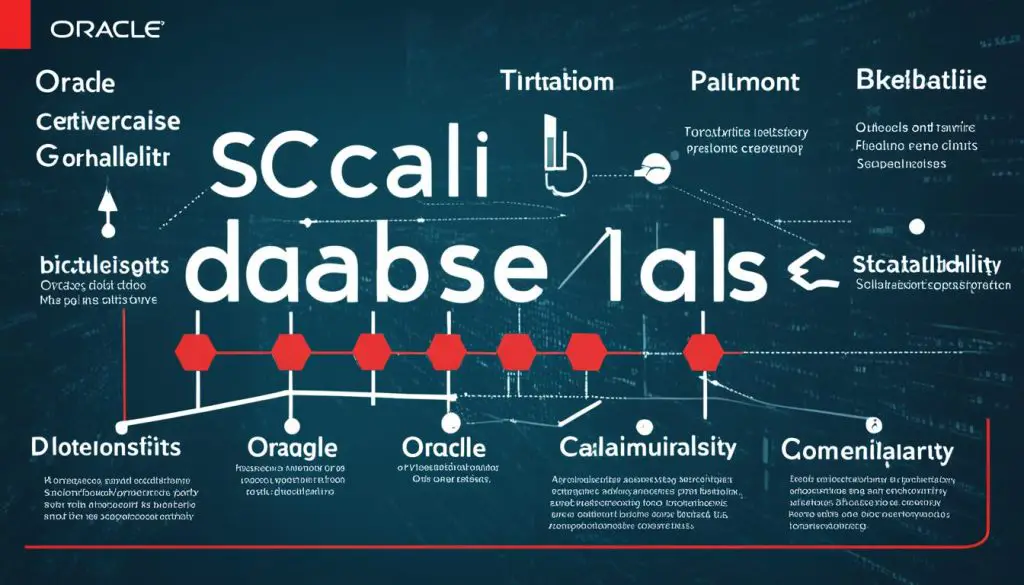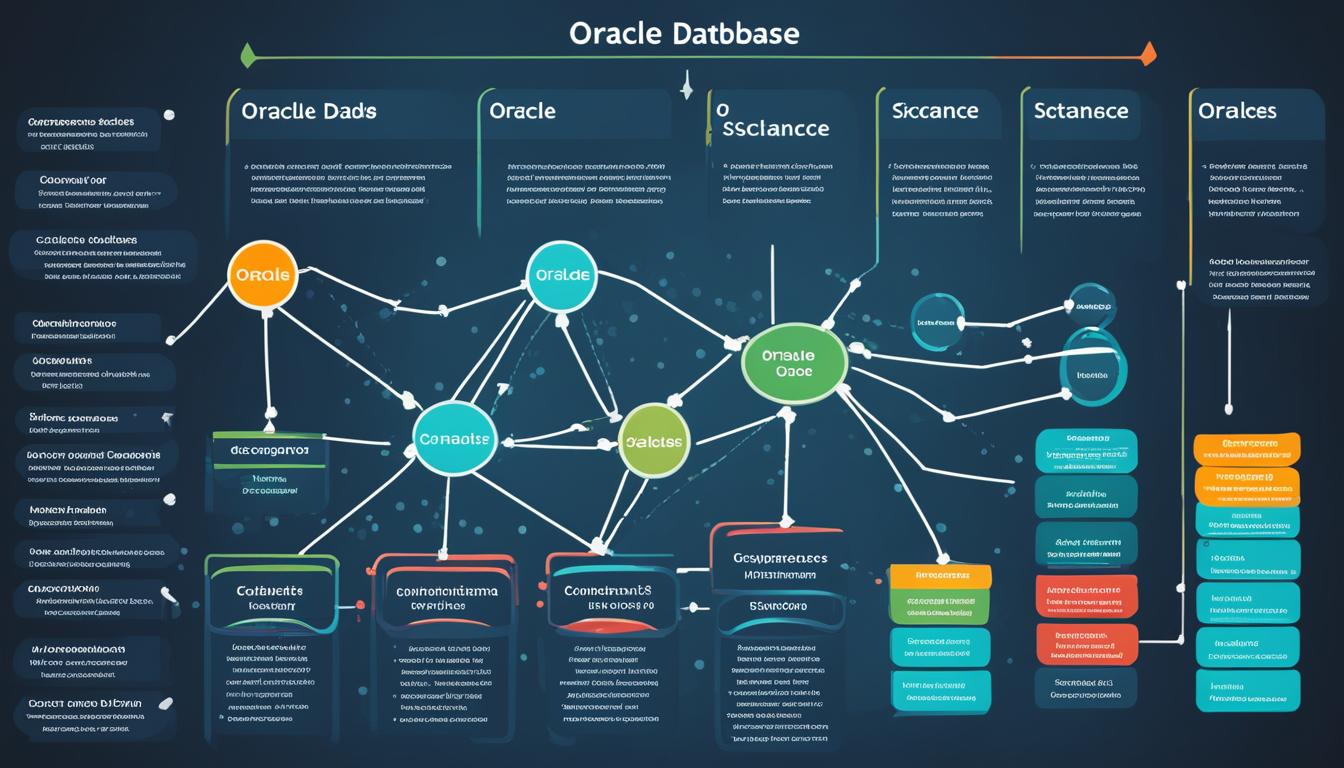What is Oracle Database: An Introductory Guide
In today’s digital age, data is the lifeblood of organizations. It is crucial to have a reliable and efficient database management system that can store, retrieve, and manage data effectively. One such powerful solution is Oracle Database, a leading database technology that has revolutionized the world of enterprise computing.
Oracle Database is not just a mere storage system; it is a comprehensive platform designed for enterprise grid computing. With its robust features, flexible architecture, and cutting-edge technology, Oracle Database offers unmatched performance, scalability, and security to meet the ever-growing demands of modern businesses.
Let’s take a closer look at some key aspects of Oracle Database:
Oracle Database Overview:
Oracle Database is a sophisticated and highly advanced database management system that enables organizations to store, retrieve, and manipulate vast amounts of data. It provides a secure and centralized repository for organizing and managing structured and unstructured data.
Oracle Database Features:
Oracle Database is packed with a wide array of features that enhance efficiency, productivity, and data integrity. From advanced security measures to intelligent storage management, Oracle Database offers a comprehensive suite of tools and functionalities to address diverse business needs.
Oracle Database Components:
Oracle Database consists of various interconnected components that work together to form a robust and reliable database environment. These components include the database server, instance, memory structures, background processes, and data files.
Oracle Database Architecture:
At the heart of Oracle Database lies its unique and scalable architecture. The architecture encompasses physical and logical structures, data dictionary views, management tools, and networking components, all working harmoniously to support high-performance data processing and data management operations.
Oracle Database Versions:
Oracle Database has a rich history of continuous improvement and innovation. With each new version, Oracle introduces new features, enhancements, and optimizations to cater to evolving business requirements and technological advancements.
Oracle Database Benefits:
Implementing Oracle Database offers numerous benefits for organizations, such as improved performance, scalability, reliability, security, and ease of administration. It empowers businesses to harness the power of data and make informed decisions, ultimately driving growth and success.
Key Takeaways:
- Oracle Database is a robust and comprehensive solution for enterprise grid computing.
- It offers advanced features and functionalities to support efficient data management and processing.
- The architecture of Oracle Database ensures scalability, flexibility, and high performance.
- Oracle Database is continuously evolving and enhancing to meet the changing needs of businesses.
- Implementing Oracle Database provides organizations with improved performance, reliability, security, and ease of administration.
The Evolution of Oracle Database
Oracle Database has a rich history spanning over 35 years of innovative development. It all began in 1979 with the release of Oracle V2, the first commercially available SQL-based RDBMS. Since then, Oracle Database has continuously evolved with each version introducing new features and enhancements, keeping up with the ever-changing needs of the industry.
Each version of Oracle Database has brought significant advancements and improvements, making it one of the most powerful and widely used database management systems today. Let’s take a closer look at some key highlights of Oracle Database’s evolution:
- Support for different platforms: Oracle Database has expanded its compatibility by adding support for various platforms, ensuring that organizations can integrate it seamlessly into their existing infrastructure.
- Improved concurrency control: Oracle Database has continuously enhanced its ability to handle multiple users accessing the database simultaneously, ensuring efficient and uninterrupted operations.
- Distributed computing: Oracle Database introduced features that enable distributed computing, allowing applications and data to run seamlessly across multiple systems and locations.
- PL/SQL stored program units: Oracle Database introduced the powerful PL/SQL language, allowing developers to store and execute procedural code within the database, providing enhanced flexibility and performance.
- Object-relational capabilities: Oracle Database incorporated object-relational features, enabling the storage and manipulation of complex data structures, including user-defined data types and methods.
- Internet computing support: Oracle Database embraced internet technologies, providing features and tools for web application development and connectivity.
- Grid computing: Oracle Database introduced grid computing capabilities, allowing resources such as servers, storage, and networks to be pooled together for increased performance, scalability, and flexibility.
- Cloud readiness: Oracle Database has adapted to the demands of cloud computing, offering features and capabilities that enable seamless integration and operation in cloud environments.
One of the major milestones in the history of Oracle Database was the release of Oracle Database 12c, which introduced groundbreaking features such as the Multitenant architecture, In-Memory column store, and support for JSON documents. These additions further enhanced the performance, scalability, and manageability of Oracle Database.
In subsequent versions, such as Oracle Database 18c and 19c, the focus shifted towards integration, enhanced memory performance, and stability. These versions brought improvements in various areas, with an emphasis on features like integration with directory services, enhanced memory performance, JSON support, and enhancements to Active Data Guard.
Overall, Oracle Database has continually evolved to meet the changing demands of the industry and has remained at the forefront of database technology. Its rich history and constant innovation have solidified its position as a leading choice for organizations across the globe.
| Version | Key Features/Enhancements |
|---|---|
| Oracle V2 (1979) | First commercially available SQL-based RDBMS. |
| Oracle Database 12c | Multitenant architecture, In-Memory column store, support for JSON documents. |
| Oracle Database 18c | Integration with directory services, enhanced memory performance. |
| Oracle Database 19c | Long-term support version, stability improvements, enhancements to JSON and Active Data Guard. |
Oracle Database Administration
In the world of Oracle Database, effective administration ensures smooth and efficient operation. As an Oracle Database administrator, various tasks and responsibilities fall under my purview. These tasks include but are not limited to configuring the database, managing memory and storage, overseeing user and table management, troubleshooting issues, implementing backup and recovery strategies, and monitoring performance. To carry out these tasks effectively, I rely on the powerful administrative capabilities provided by Oracle Enterprise Manager Database Express (EM Express).
“Effective administration is the cornerstone of a well-functioning Oracle Database.”
Through EM Express, I have access to an intuitive and user-friendly interface that streamlines the administrative process, enabling me to perform my duties efficiently. With a few clicks, I can configure database settings, allocate memory and storage resources, grant user privileges, create and manage database objects, and troubleshoot common issues.
For those new to Oracle Database administration or seeking a comprehensive guide, Oracle provides an invaluable resource – the Oracle Database 2 Day DBA guide. This quick-start guide covers all the essential tasks involved in day-to-day Oracle Database administration. It offers step-by-step instructions, detailed explanations, and best practices for each administrative task, empowering administrators to confidently navigate the intricacies of database management.
Please refer to the below table for an overview of the key administrative tasks and their corresponding descriptions:
| Administrative Task | Description |
|---|---|
| Database Configuration | Configuring database parameters, initialization files, and network settings. |
| Memory and Storage Management | Managing memory allocation, storage allocation, and optimizing performance. |
| User Management | Creating and managing user accounts, granting access and privileges. |
| Table Management | Creating and managing database tables, indexes, and other objects. |
| Troubleshooting | Identifying and resolving common database issues and errors. |
| Backup and Recovery | Implementing backup strategies to protect data and performing recovery operations in case of data loss. |
| Performance Monitoring | Monitoring database performance, identifying bottlenecks, and optimizing query execution. |
By following the Oracle Database 2 Day DBA guide and leveraging the capabilities of Oracle Enterprise Manager Database Express, I ensure the smooth operation, security, and reliability of Oracle Database. With these tools at my disposal, I am equipped to handle the challenges of database administration and deliver exceptional performance for the users and applications that rely on Oracle Database.
Benefits of Oracle Database
Oracle Database offers several benefits to organizations:
- Performance and Scalability: Oracle Database can handle large amounts of data and concurrent users, ensuring high performance and scalability.
- Reliability: Continuous availability of data and applications, with features like Oracle Real Application Clusters (RAC) and Automatic Storage Management (ASM).
- Security and Privacy: Oracle Database provides security features to protect enterprise grid resources and ensure privacy.
- Self-Management: Oracle infrastructure automates many functions, reducing the workload on administrators.
- Distributed Computing: Oracle Database has advanced integration features that allow applications and data to run anywhere in the network.
- Integration with Other Technologies: Oracle Database integrates well with other Oracle technologies, such as Oracle Streams and Oracle Transportable Tablespaces.
- Adaptability and Flexibility: Oracle Database can adapt to changing business requirements and support diverse computing needs.
- Cloud Readiness: Oracle Database is designed to work in a cloud environment, with features like Multitenant architecture and support for JSON documents.

Conclusion
In conclusion, Oracle Database is a comprehensive and powerful database management system that has been designed specifically for enterprise grid computing. Over the years, Oracle Database has evolved and adapted to incorporate new features and support emerging technologies, making it a cutting-edge solution for data management.
One of the key strengths of Oracle Database is its ability to deliver high performance and scalability, allowing organizations to handle large amounts of data and concurrent users effectively. Additionally, Oracle Database provides reliability through continuous availability of data and applications, ensuring consistent service delivery.
Security and privacy are paramount in today’s digital landscape, and Oracle Database offers robust security features to protect enterprise grid resources and ensure data privacy. It also provides self-management capabilities that automate various functions, reducing the workload on administrators and improving operational efficiency.
Furthermore, Oracle Database excels in distributed computing, enabling applications and data to run seamlessly across different network environments. Its integration with other technologies, such as Oracle Streams and Oracle Transportable Tablespaces, enhances its adaptability and flexibility, enabling organizations to meet diverse computing needs.
As technology continues to advance, Oracle Database remains at the forefront of innovation, continuously evolving to meet the evolving data management requirements of organizations. With its adaptability, cloud readiness, and comprehensive feature set, Oracle Database stands as an excellent choice for modern IT infrastructures.
FAQ
What is Oracle Database?
Oracle Database is a collection of data treated as a unit, designed for enterprise grid computing. Its purpose is to store and retrieve related information in a multiuser environment, delivering high performance and preventing unauthorized access.
What are the key features of Oracle Database?
Oracle Database offers performance and scalability, reliability, security, self-management, distributed computing, integration with other technologies, adaptability, flexibility, and cloud readiness.
What are the components of Oracle Database architecture?
Oracle Database has logical and physical structures that can be managed separately. Its architecture includes the Oracle grid architecture, which allows for the pooling of servers, storage, and networks into a flexible, on-demand computing resource.
What are the different versions of Oracle Database?
Oracle Database has gone through several versions and enhancements over the years. The major versions include Oracle V2, Oracle Database 12c, Oracle Database 18c, and Oracle Database 19c.
What tasks are involved in Oracle Database administration?
Oracle Database administration involves tasks such as configuring the database, managing memory and storage, managing users, managing database objects, troubleshooting, creating backups, and monitoring performance.
What is Oracle Enterprise Manager Database Express?
Oracle Enterprise Manager Database Express (EM Express) is the primary administrative interface for Oracle Database. It provides centralized management capabilities for configuring and monitoring the database.
What are the benefits of using Oracle Database?
Oracle Database offers performance and scalability, reliability, security and privacy, self-management capabilities, distributed computing, integration with other technologies, adaptability and flexibility, and cloud readiness.
Can Oracle Database work in a cloud environment?
Yes, Oracle Database is designed to work in a cloud environment. It has features like the Multitenant architecture and support for JSON documents that make it well-suited for cloud deployments.
How has Oracle Database evolved over the years?
Oracle Database has over 35 years of innovative development. Each version introduced new features and enhancements, including support for different platforms, improved concurrency control, distributed computing, PL/SQL stored program units, object-relational capabilities, internet computing support, grid computing, and cloud readiness.
What is the purpose of Oracle Database 2 Day DBA?
Oracle Database 2 Day DBA is a quick start guide that covers various database administration tasks in detail. It provides step-by-step instructions and explanations of the concepts behind the tasks.
- About the Author
- Latest Posts
Janina is a technical editor at Text-Center.com and loves to write about computer technology and latest trends in information technology. She also works for Biteno.com.






